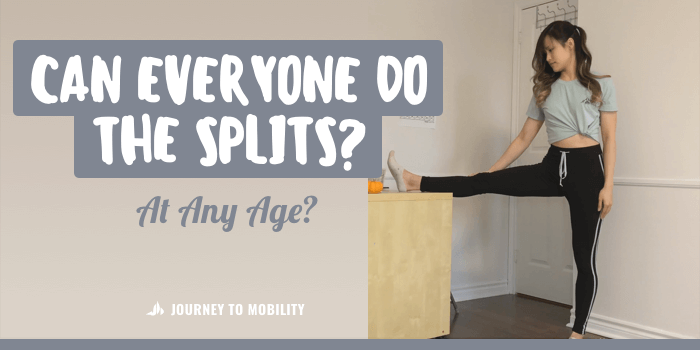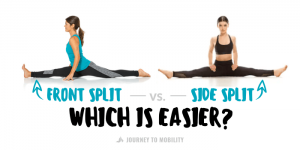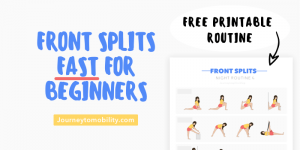For some people, getting the splits is a life-long goal. Then there’s people like me who just wanted to be able to touch their toes! I started training for the splits when I was 24. Prior to that, I was inflexible my entire life. I remember wondering if it was even possible for everyone to learn how to do the splits.
I did some research and found that with consistent practice, most healthy adults can train and eventually learn how to do the splits (1). However, there are some structural differences that make it more optimal for some people to be training for the splits and less optimal for others. Let’s go over what those structural differences are and a simple test you can do at home to determine if you have the potential to get the splits.
[Update] I can now touch my toes and do the front splits on both sides! Read more about my splits journey and what I did to get my splits in just 5 months.
Overview
- Can Everyone do the Splits?
- Side Split Test – Do this to find out if you can get your splits
- Can You Learn to do the Splits at Any Age?
- How to Stretch for the Splits (Easy Routine)
Can Everyone Do The Splits?
Thomas Kurz, the author of Stretching Scientifically: A Guide to Flexibility Training (2), says that it’s a misconception to think that most people are physically incapable of doing the splits. Kurz says “for the great majority of people the structure of joints and the length of ligaments are not an obstacle for doing splits.”
Hips: Coxa Vara
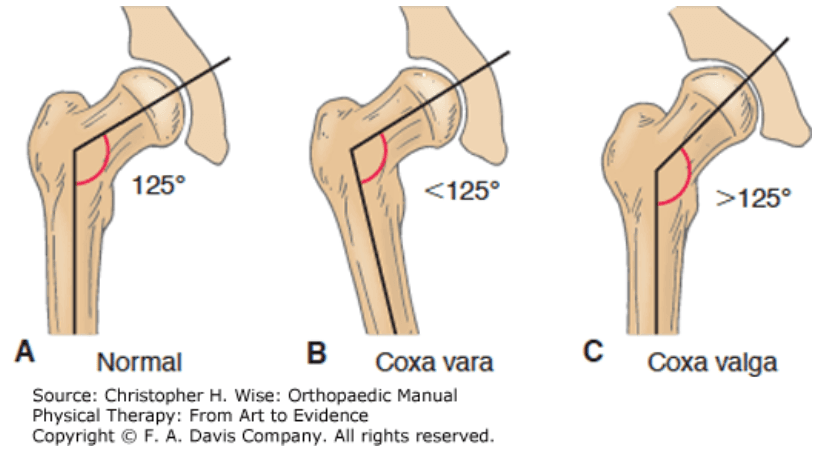
One exception that would prevent you from getting the splits is a condition called Coxa vara. Coxa vara is a structural deformity in the hips defined by “a decreased angle between the head and neck of the femur and its shaft” (3). The normal range for hip rotation is ~125 degrees, whereas people with Coxa vara have a more limited range of rotation (<125 degrees). It is also possible to have this condition only on one side.
There are also people with Coxa valga who can rotate beyond the normal hip range. For these individuals, it may be easier to train for the splits.
Hip Flexors: Psoas Muscles
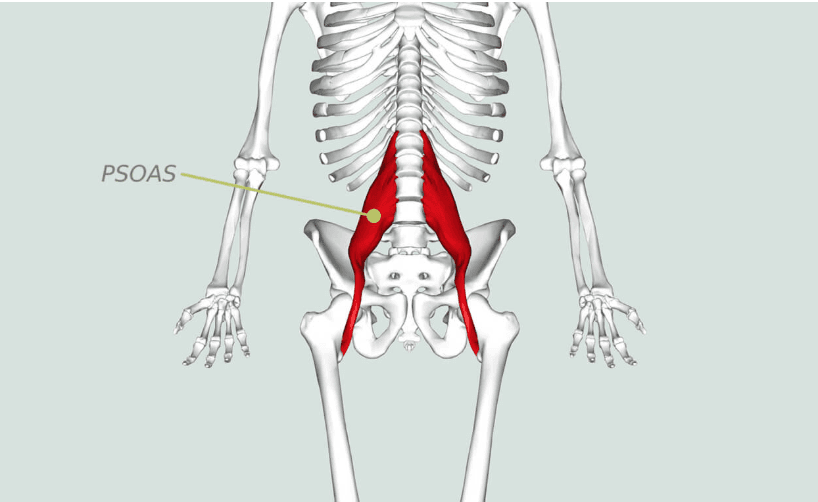
Tight or weak psoas muscles (pronounced SO-AS) may also limit your hip rotation. The psoas major is a lengthy fusiform (or ‘spindle-shaped’) muscle that attaches to the lower lumbar region of the spine and extends through the pelvis to the femur or upper leg (4). The Psoas muscle is one of the six muscles that make up your hip flexor. It allows you to bring your knee up towards your chest (think high knees or marching in place).
Your hip flexors become tight over time when you sit a lot and don’t stretch. If the psoas muscles are tight, it limits the rotation of the femur within the hip socket. This makes it more difficult to rotate your hips and achieve a true front split.
Dr. Eric Berg DC (5), a chiropractor specializing in weight loss, shows how you can identify if your psoas muscles are too tight or too weak and how to fix it in this video.
Side Split Test
Do this test to find if you can train to get your front splits. Before you begin, make sure that you have a surface to put your leg on. Use a chair or table that is at hip height.
- Stand next to a chair or table and put your leg on it.
- Make sure that both of your hips are in one line with the leg that’s raised.
- Repeat this test with the other leg.
If you can do these then you have technically done the “half splits” on both sides! Thus, you don’t need to be naturally flexible or in shape to start your training.
Please note that you should check with a healthcare professional first if you’ve had any kind of hamstring injury or have concerns about achieving this level of flexibility. Doing the splits isn’t for everyone!
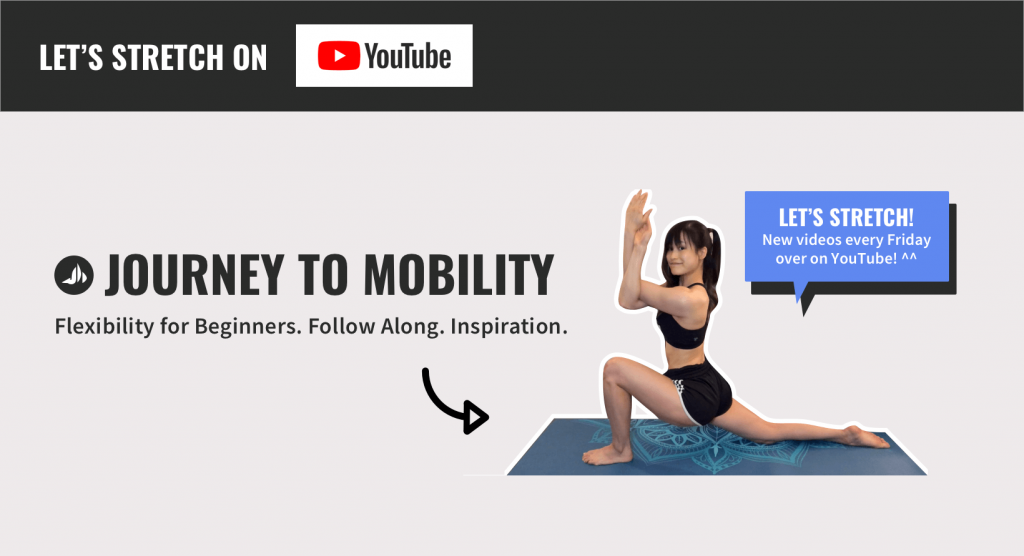
Can You Learn to Do The Splits at Any Age?
Flexibility naturally declines as we age. It’s much easier for a kid to get their splits than it is for an adult. Eiko the writer of Even the stiffest People Can Do The Splits said “If your body is stiff, it becomes harder and harder to do things like walk, step over things, pick things up, sleep or even sit” (6).
The good news is that it’s possible to learn how to do the splits at any age, whether you’re 40 or 50. Flexibility improves with daily practice. Taking hot yoga or pilates classes would help you get into the routine of stretching everyday. The key is to be patient, stick to a routine and to keep learning about all the things your body can do.
How to Stretch for the Splits (Easy Routine)
The front splits requires flexible calves, hamstrings and hip flexors. These are some of my favourite beginner stretches that target these muscles. They are easy enough to follow along even if you are not flexible.
Use yoga blocks for each move to correct your form. Stretching with correct form will help you get results much faster. Not stretching correctly puts you at high risk of injury. For best results, do these stretches 3-6 times a week.
1) Standing Calf Stretch with Bent Knee

Stretching out your calves will help you straighten out your legs when doing the splits. Improving my calf flexibility made it easier to reach for my toes and correctly perform more advanced stretches such as the downward facing dog. Calves are so important but it’s often neglected while training for the splits.
- With your core engaged, step forward with your right leg and flex your foot.
- Bend your left knee as you hinge forward. Your back should be flat.
- Rest your hand on your leg. Focus on flexing your right foot. You can pull the right foot towards your body if you can reach with a flat back.
- Breathe and hold for 20-30 seconds, repeat on the other side.
2) Goddess Stretch

The Goddess pose in yoga strengthens the calves, quadriceps, inner thighs and core. Adding a twist with this pose stretches the hips, groins, upper back and chest.
- Stand with your feet yoga mat width apart with your feet pointing out.
- Bend your knees to get to a pile position. Your thighs should be parallel to the floor.
- Press your right hand on the inside of the knee and twist your shoulders to the left. This will open your upper back. For a more gentler variation, rest your elbows inside your knees with your hands together in prayer. Use your elbow to press the insides of your knees outwards
- Breathe and hold the twist for 20 seconds, repeat on the other side.
3) Wide Leg Forward Fold

This pose is also called the Standing Head-to-Knees. It stretches and lengthens the hamstrings and calves. It’s a good stretch for blood circulation and spinal movement.
- Stand with your feet yoga mat width apart with your feet pointing forward.
- Bend forward, reaching your heads towards your toes.
- You can hold onto a yoga block for support or grab onto both elbows. Let your head hang as you gently swing your elbows forward and backwards, side-to-side.
- Breathe and hold for 30 seconds.
4) Pyramid Stretch

The Pyramid pose stretches the hips, hamstring and shoulders as you bend your body forward. This pose requires balance and full body coordination, it calms the mind and improves posture.
- Stand with your legs 3 feet apart. Twist your body and legs to the right. Your feet should also be pointing to the right.
- Hinge forward keeping your back as flat as possible.
- Rest your hands on your leg. Try to reach a little further each time as you breathe. Your back should still be flat.
- Breathe and hold for 30 seconds, repeat on the other side.
5) Low Lunge with Side Stretch

This stretch targets the psoas muscles and stretches muscles deep within the hip flexors. This is one of my favourite stretches to do in the morning. Doing this stretch will help you keep your hips squared while doing the splits.
- With your core engaged, step forward with your right leg.
- Lowering your hips until the back knee is on the ground. Both knees should be bent at a 90-degree angle. Your front knee should be directly above your ankle. Your back knee should line up with your hips.
- Hold on to a yoga block with your right hand if you need support. Reach your left arm up and over to the right for a good side stretch. You should feel this stretch down the side of your body through to the left hip flexor.
- Breathe and hold for 20-30 seconds, repeat on the other side.
6) Half Split Hold

This pose is also called the Runner’s Lunge. It stretches the hips, lower back, legs and elongates the spine. This stretch will prepare you for getting into the splits pose.
- Start in a kneeling position, extend your right leg out in front of you. Flex the foot.
- Keeping your hips square, bend forward with your back flat. Place yoga blocks on both sides to help with balance.
- Breath and hold for 20-30 seconds, repeat on the other side.
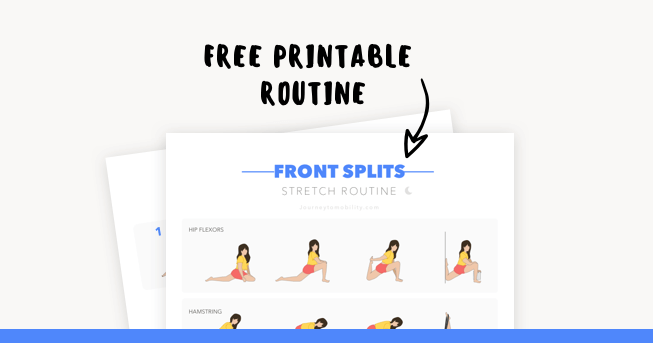
Takeaway
With practice and dedication, most healthy individuals can learn how to do the splits. For people who are more flexible, this could take weeks or months. For those of us who are less flexible, it could take months or even years. It took me 5 months to get my splits and honestly, I could not be more proud. Our bodies are all different and unique which makes each journey exciting. Breathe and be patient with yourself. Improvements will come over time!
Read about effective tips to get your front splits fast and a step-by-step guide on how to do the splits for beginners.
PS – Here’s a Pinterest-friendly image if you want to save this routine!


